I treated myself to a few new colors and was keen to try them out. In fact I was so keen that although I turned on the video camera, I just got to work and made a painting and didn’t take the time to actually tell you anything. So this video has music for a change. Turn down the volume if that bothers you. I made two slightly different tiles, although I only took a video of one of them.
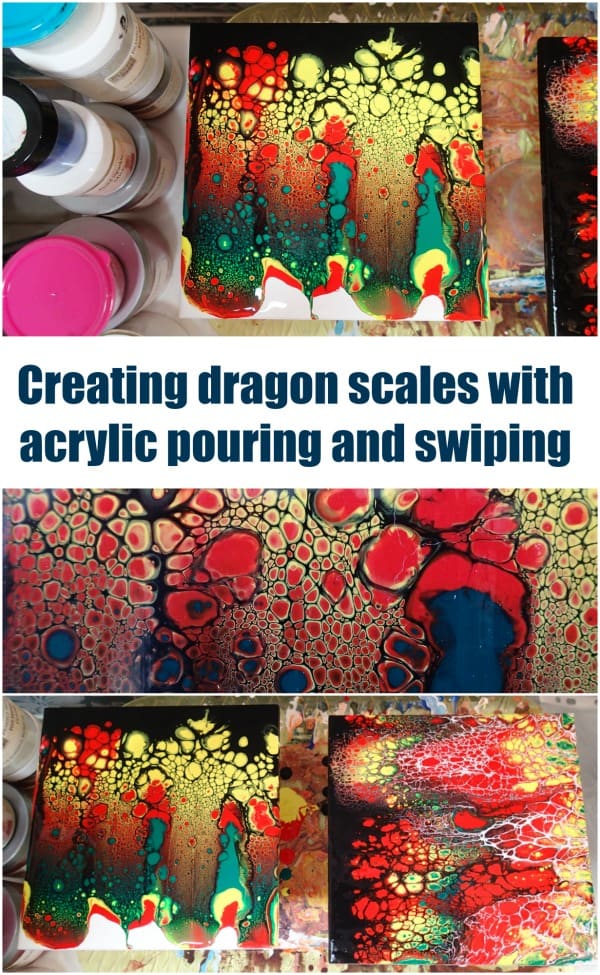
These were created with Lemon Yellow, Warm Red and Emerald Green. Plus some black and white for swiping. These gave quite a striking effect! In the one in the video I did do the double swipe. First with black and then with white. But in the one I don’t have the video for, I just swiped with black and liked the effect so much that I filled in the bottom with white and didn’t swipe back the other way.
I love how the cells transition from large near the top of the swipe to smaller and smaller and eventually teeny tiny but still beautifully detailed at the bottom. As usual, check out the slideshow below for more images, both wet and dry, and close-ups of the details.
After being told in high school that she was so bad at art that she should switch to another subject, Deby didn’t paint again for 35 years. Then a stroke released a new wave of creativity and she began exploring with dot painting, abstract and eventually acrylic pouring, and at last the joy of working with color returned. You don’t need ‘talent’ to be an acrylic pouring artist – just enthusiasm, some basic instruction, and a willingness to try, fail and try again. Paint along with her and learn from her many mistakes, and you’ll soon make great art together.

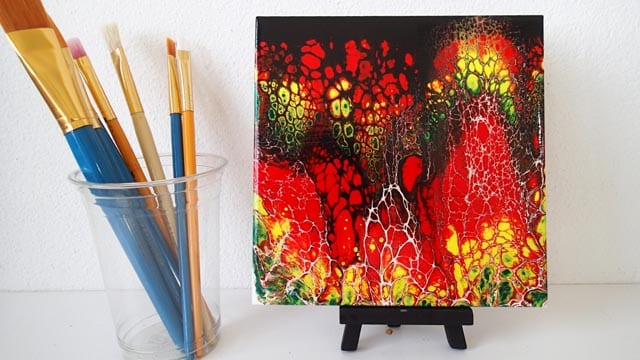
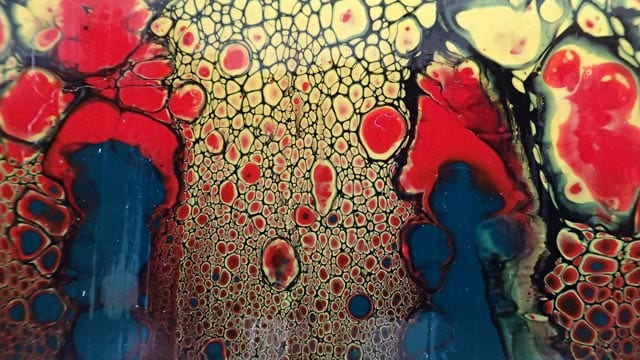

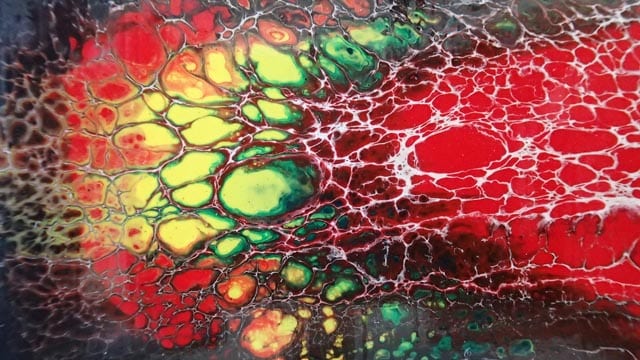
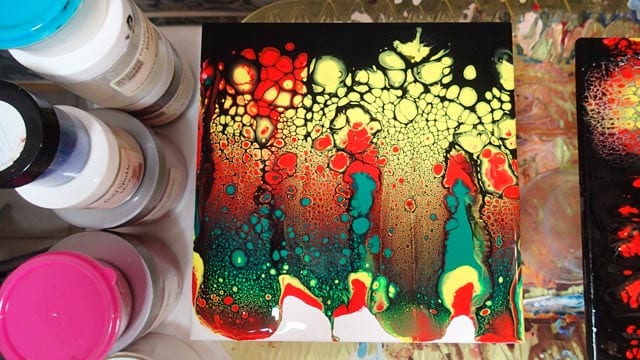
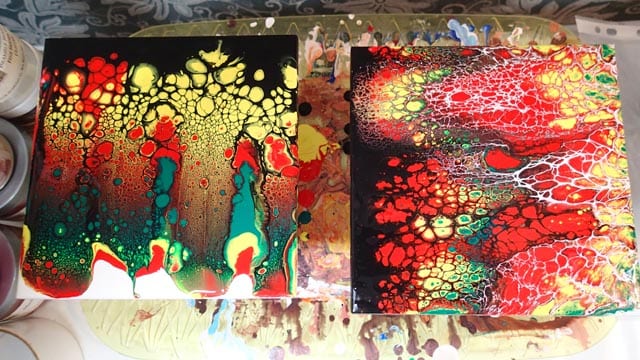
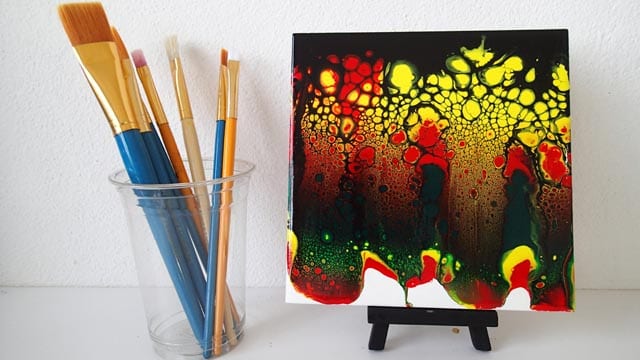
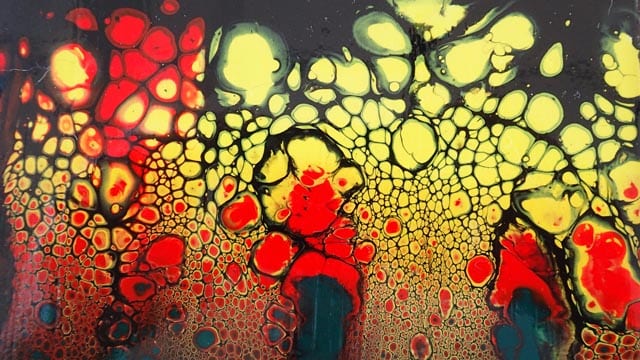
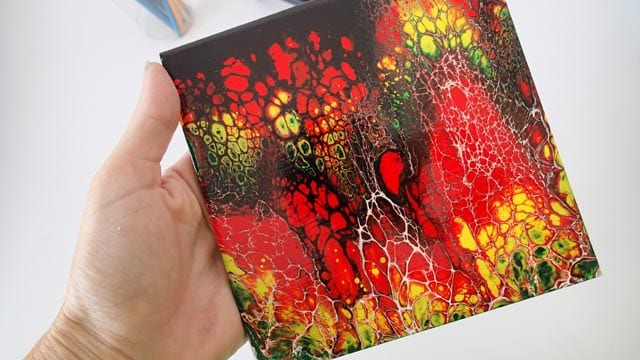
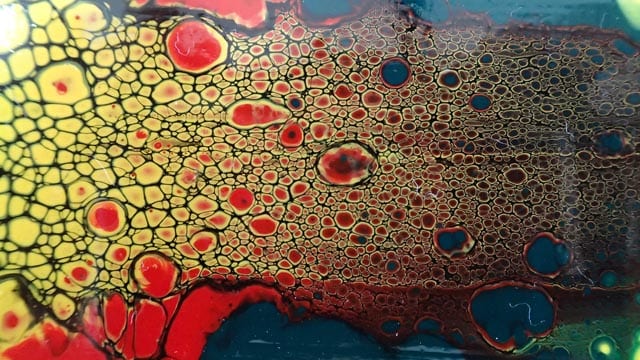


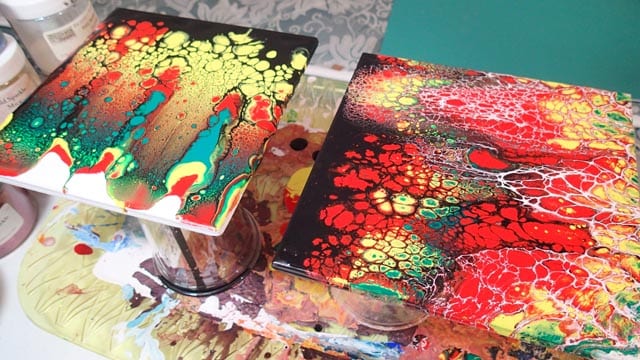
Your art is the best I have seen demonstrated. Delicious stuff! Very inspiring. I appreciate the tip you provided regarding the finishing product, polycrylic, which you like so much.
Thanks very much, Deby.
Charlotte
Aww, thanks Charlotte, you are very kind.
I’m so excited to have found your site! I’m a new painter and love acrylic flow, and have been trying out my own experiments with different mediums, so it’s amazing to see what works and what doesn’t without having to waste time doing it myself. I’ve never tried floetrol but am going to now, Thanks Deby!
Great, glad we connected Lynn. Are you in the Facebook group? Come and show us your work. http://facebook.com/groups/acrylicpouring
What is floetrol and is that what makes these great cells?
Floetrol is a paint conditioner and thinner that allows the paint to flow more easily. It certainly helps in the formation of cells, as does the use of oils in the paint such as silicone or dimethicone.
Absolument sensationnel….j’aime énormément et excuse me il I’m no table to express my filing in English mais ces effets sont magiques, fantasmagoriques
Merci, merci
Could you give the exact measurments of flotrol to paint ratio and how much water? Also do you use silicone, if so how much. I have been trying and trying to get that lacey effect to no avail.
Sure. I use 2 parts paint to 1 part floetrol and then the water varies depending on the thickness of the paint. There is no set amount I can give for that because your paints might not be the same as mine. You have to add water to get the right pouring consistency. Some paints might not need any. Then I add silicone oil, at the rate of about 2 drops per original tablespoon of paint, before I added the extras.
Can a water based floterol be used or does it have to be the latex one please
You can use water-based Floetrol, Bev. It works great! It’s the oil-based ones that you should avoid when working with acrylic pours.
Enjoyed the video and all your information has been very helpful
I loved this and will try it as soon as I can. I also watched your experiments on clear coating the tiles for coasters. What did you land on?
I will be painting with my nephew tomorrow. was my my good fortune to come across your style of painting. Looking forward to seeing the final result. Thanks.
I will be painting with my nephew tomorrow. Was my good fortune to come across your style of painting. Looking forward to seeing the final result. Thanks.
Looks good.
Beautiful work and so many lacy cells. I’ve been trying to achieve creating cells but not really very successful. I’ve been using liquitex about same amount as paint, water as required then 3 drops of silicone. I get some interesting designs but not many cells, can you help please. Is floetrol better.
Joy
One of your best!